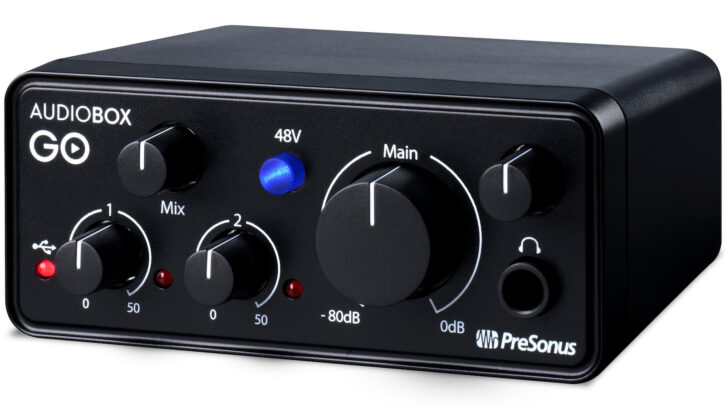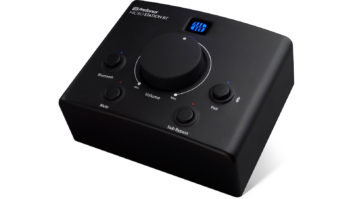
| MIX VERDICT: PreSonus AudioBox Go |
| THE TAKEAWAY: “The Audiobox Go is a capable and exceptionally portable interface that’s an excellent value.” |
| COMPANY: PreSonus • www.presonus.com PRICE: $79.95 PROS: • Extreme portability. • Great ease of use. • Amazing value. CONS: • Only one line input. • Can’t record stereo-miked sources. |
I’m not sure which is more notable: the price of the AudioBox Go or its size. It costs $79.95 and is a mere 4.25 inches wide—a quarter the width of a standard rack device. It only weighs about half a pound and can fit in the palm of your hand.
The AudioBox Go is USB-bus-powered with Mac and Windows computers, iOS phones and tablets and many Android devices, making it even more potent as a mobile interface. It’s also USB- class-compliant and supports up to 24-bit/96 kHz audio.
PreSonus markets the AudioBox Go as “designed to meet the needs of those new to recording, as well as those looking for a flexible, mobile solution.” Considering that most Mix readers aren’t recording newbies, I’ll focus here on the “flexible mobile solution” aspect.
The AudioBox Go is a 2-in/2-out interface—sort of. It has only one mic input, which is on an XLR/1/4-inch mic/line combo jack with switchable phantom power. The second input is 1⁄4- instrument. On the output side, the unit features a pair of TRS balanced outs for feeding monitors and a 1⁄4-inch TRS headphone out.
You make all adjustments from the front panel and access all connections—except the headphone output—on the back. The front panel sports input gain knobs for channels 1 and 2.
The Oven — Mix Real-World Review
Because it’s so compact, there’s not a lot of room on the AudioBox Go for meters and indicators. What’s there consists of an LED power indicator, LED overload indicators for each channel, and a blue 48V phantom-power button that lights up when you turn it on.
To avoid latency when recording, the AudioBox Go features a Mix knob that lets users dial in the ratio of audio returning from a DAW and the direct signal being recorded. The front panel houses a large knob for controlling the level of the main outputs and a smaller one for the headphone volume.
PreSonus also includes a USB-C-to-USB-B cable and four stick- on rubber feet in the box. Make sure you attach the latter to the bottom of the interface immediately. The AudioBox Go is so light that it slides around way too easily without the feet.
Software includes PreSonus’ generous Studio Magic bundle, which features Studio One Prime, a feature-reduced version of the company’s flagship sequencer, and a selection of processor and instrument plug-ins from Brainworx, iZotope, Lexicon and others. Some are feature-reduced, while others are full versions.
Considering the price of the AudioBox Go, I was impressed with the sound quality. The preamp is an XMAX-L, a variation of the company’s proprietary preamp design. One of the ways I tested it was to record acoustic guitar, banjo, mandolin and vocals, and then use the same mic to record similar parts through a significantly more expensive preamp. The AudioBox Go held its own when I compared the tracks; It did not sound like an entry-level unit.
That said, the unit does have some limitations. Despite being a two-channel interface, there’s only one preamp, so you can’t record stereo-miked sources. It also has only one line input, so a stereo recording off the board at a live show isn’t possible either.
But if those restrictions aren’t problematic for your workflow, the Audiobox Go is a capable and exceptionally portable interface that’s an excellent value.







